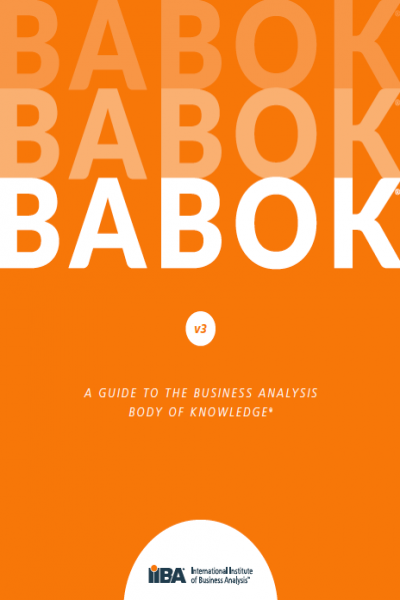BABOK A Guide to the Business Analysis Body of Knowledge
Define the profession of business analysis and provide a set of commonly accepted practices. It helps practitioners
discuss and define the skills necessary to effectively perform business analysis work.
Đặt in thành sách tại HoaXanh, xem sách in mẩu trong video bên dưới.
- 190,000đ
- Mã sản phẩm: P15622
- Tình trạng: 2
Introduction
Purpose of the BABOK® Guide
What is Business Analysis?
Who is a Business Analyst?
Business Analysis Key Concepts
The Business Analysis Core Concept ModelTM
Key Terms
Requirements Classification Schema
Stakeholders
Requirements and Designs
Business Analysis Planning and Monitoring
Plan Business Analysis Approach
Plan Stakeholder Engagement
Plan Business Analysis Governance
Plan Business Analysis Information Management
Identify Business Analysis Performance Improvements
Elicitation and Collaboration
Prepare for Elicitation
Conduct Elicitation
Confirm Elicitation Results
Communicate Business Analysis Information
Manage Stakeholder Collaboration
Requirements Life Cycle Management
Trace Requirements
Maintain Requirements
Prioritize Requirements
Assess Requirements Changes
Approve Requirements
Strategy Analysis
Analyze Current State
Define Future State
Assess Risks
Define Change Strategy
Requirements Analysis and Design Definition
Specify and Model Requirements
Verify Requirements
Validate Requirements
Define Requirements Architecture
Define Design Options
Analyze Potential Value and Recommend Solution
Solution Evaluation
Measure Solution Performance
Analyze Performance Measures
Assess Solution Limitations
Assess Enterprise Limitations
Recommend Actions to Increase Solution Value
Underlying Competencies
Analytical Thinking and Problem Solving
9.2 Behavioural Characteristics 194
9.3 Business Knowledge 199
9.4 Communication Skills 203
9.5 Interaction Skills 207
9.6 Tools and Technology 211
Chapter 10: Techniques
10.1 Acceptance and Evaluation Criteria 217
10.2 Backlog Management 220
10.3 Balanced Scorecard 223
10.4 Benchmarking and Market Analysis 226
10.5 Brainstorming 227
10.6 Business Capability Analysis 230
10.7 Business Cases 234
10.8 Business Model Canvas 236
10.9 Business Rules Analysis 240
10.10 Collaborative Games 243
10.11 Concept Modelling 245
10.12 Data Dictionary 247
10.13 Data Flow Diagrams 250
10.14 Data Mining 253
10.15 Data Modelling 256
10.16 Decision Analysis 261
10.17 Decision Modelling 265
10.18 Document Analysis 269
10.19 Estimation 271
10.20 Financial Analysis 274
10.21 Focus Groups 279
10.22 Functional Decomposition 283
10.23 Glossary 286
10.24 Interface Analysis 287
10.25 Interviews 290
10.26 Item Tracking 294
10.27 Lessons Learned 296
10.28 Metrics and Key Performance Indicators (KPIs) 297
10.29 Mind Mapping 299
10.30 Non-Functional Requirements Analysis 302
10.31 Observation 305
10.32 Organizational Modelling 308
Table of Contents
iv
Complimentary IIBA® Member Copy. Not for Distribution or Resale.
10.33 Prioritization 311
10.34 Process Analysis 314
10.35 Process Modelling 318
10.36 Prototyping 323
10.37 Reviews 326
10.38 Risk Analysis and Management 329
10.39 Roles and Permissions Matrix 333
10.40 Root Cause Analysis 335
10.41 Scope Modelling 338
10.42 Sequence Diagrams 341
10.43 Stakeholder List, Map, or Personas 344
10.44 State Modelling 348
10.45 Survey or Questionnaire 350
10.46 SWOT Analysis 353
10.47 Use Cases and Scenarios 356
10.48 User Stories 359
10.49 Vendor Assessment 361
10.50 Workshops 363
Chapter 11: Perspectives
11.1 The Agile Perspective 368
11.2 The Business Intelligence Perspective 381
11.3 The Information Technology Perspective 394
11.4 The Business Architecture Perspective 408
11.5 The Business Process Management Perspective 424


